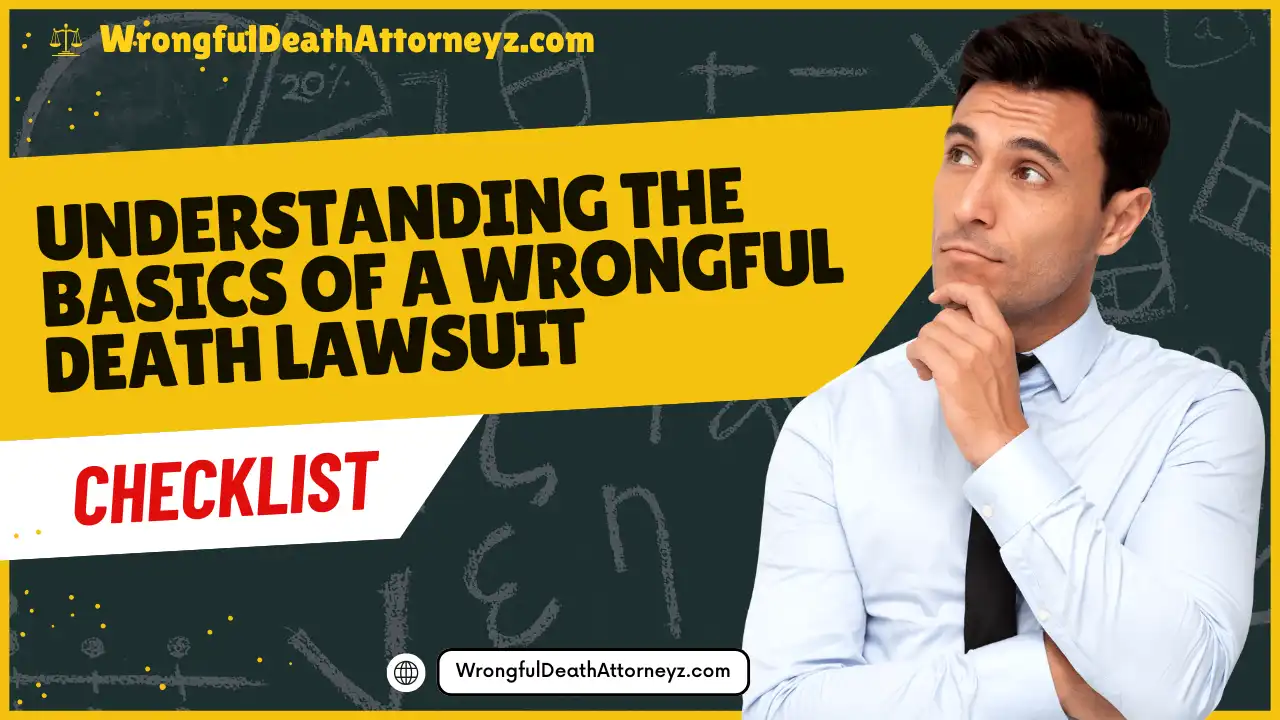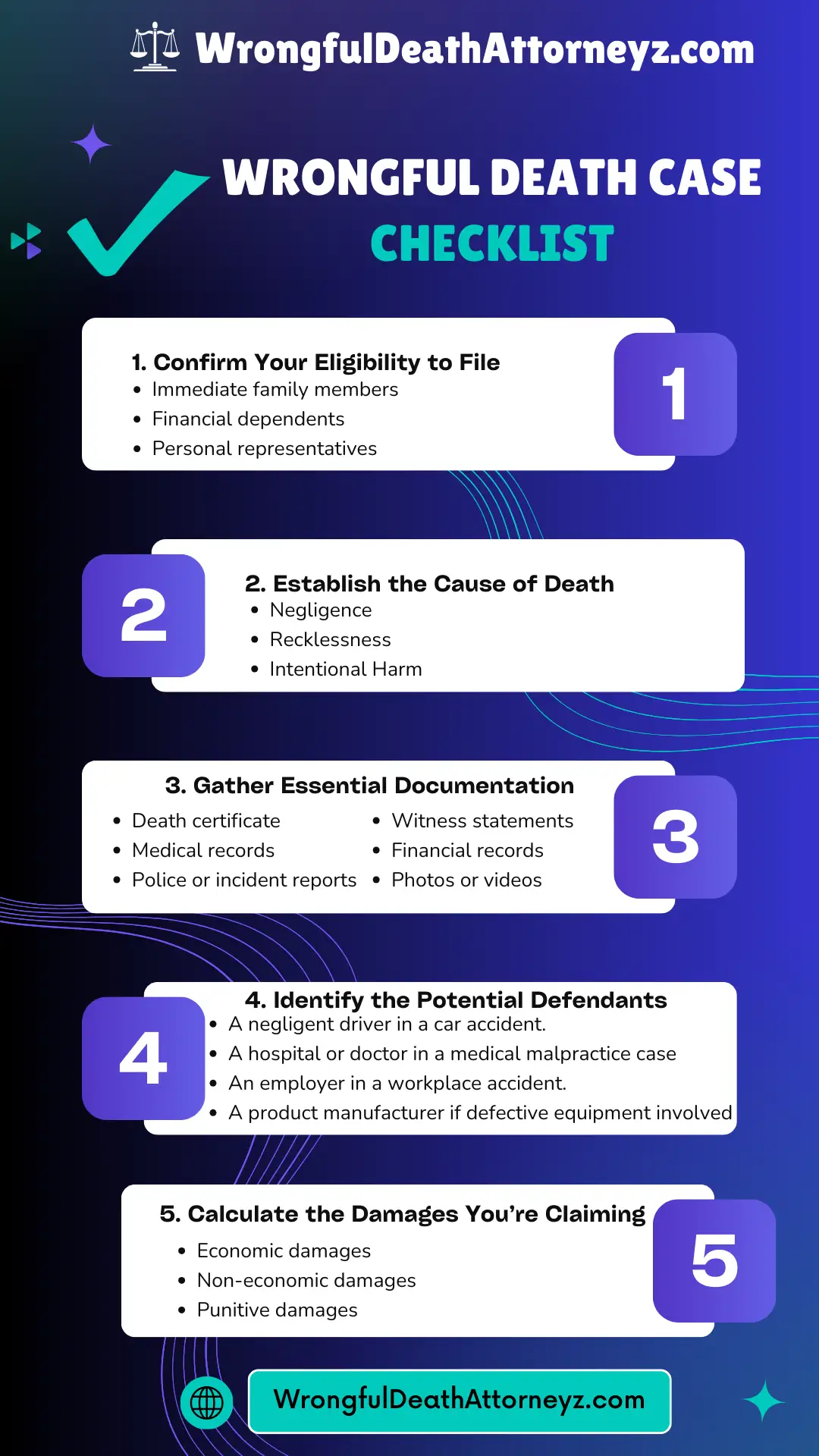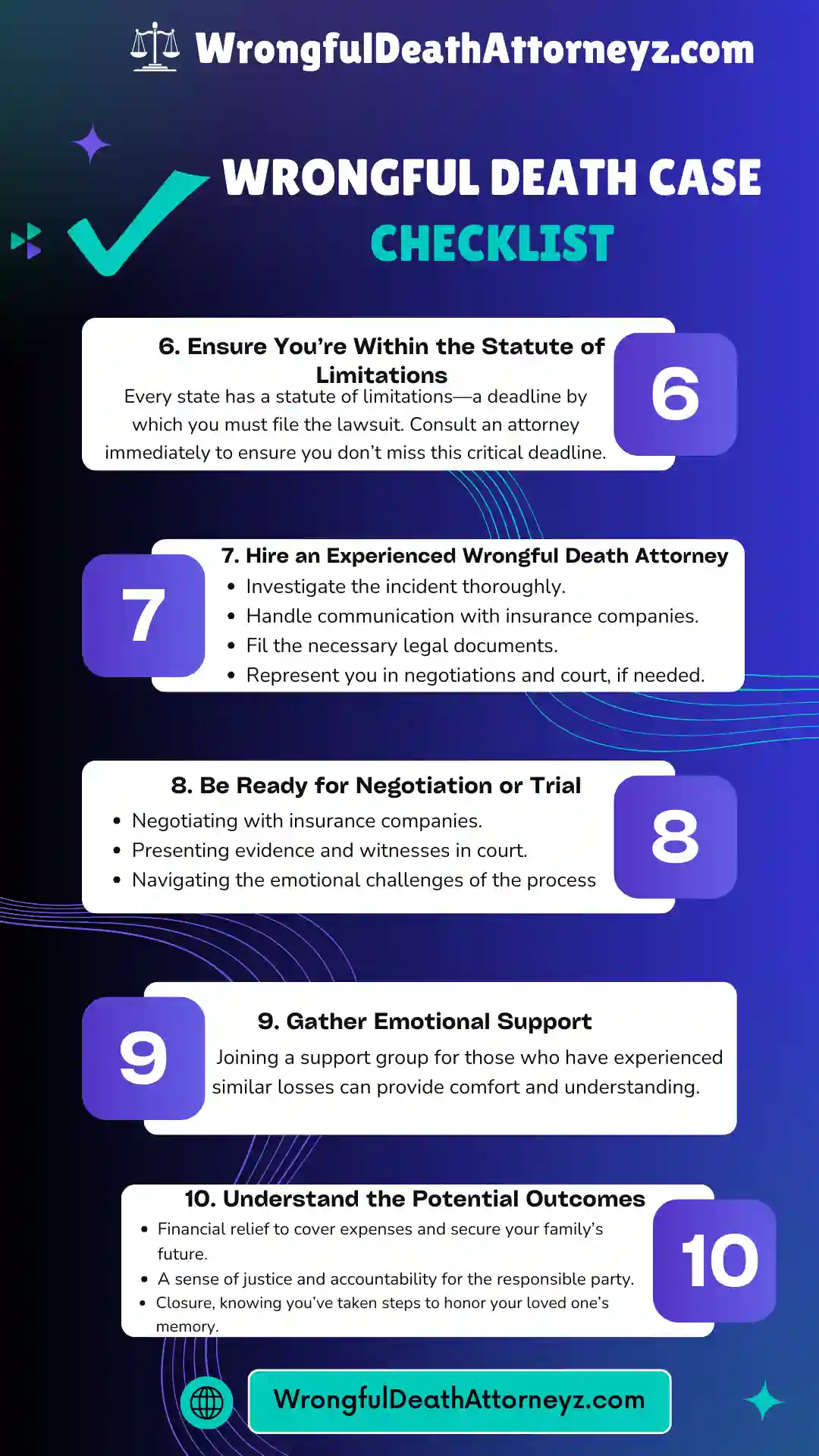Hello, We know this is an incredibly difficult time for you. Losing a loved one is heartbreaking, especially when the loss was caused by someone else’s negligence. If you’re considering filing a wrongful death lawsuit, it’s crucial to be fully prepared.
This article is designed to guide you step by step through the essentials you need before filing your case. We’ll cover everything from understanding eligibility to gathering evidence. Take your time reading this, it’s here to help you navigate this complex process with clarity and confidence.
Understanding the Basics of a Wrongful Death Lawsuit

Before diving into the checklist, let’s quickly go over what a wrongful death lawsuit entails. This type of claim seeks to hold someone legally accountable for causing a person’s death through negligence, recklessness, or intentional harm. A successful lawsuit can provide compensation for medical bills, funeral expenses, loss of income, and emotional suffering.
Filing this type of lawsuit not only helps secure financial stability for your family but also holds the responsible party accountable for their actions, potentially preventing similar tragedies in the future.
Now, let’s move to the checklist that will ensure you’re ready to file.
1. Confirm Your Eligibility to File
The first step is determining who is legally allowed to file the wrongful death lawsuit. This varies by state, but generally includes:
- Immediate family members: Spouses, children, and sometimes parents of the deceased.
- Financial dependents: Individuals financially reliant on the deceased.
- Personal representatives: Executors of the deceased’s estate.
💡 Tip: If you’re unsure whether you’re eligible, consult a wrongful death attorney. They can review your relationship with the deceased and state-specific laws. If multiple family members are involved, an attorney can help mediate and determine the best course of action.
Download Check list from here – Wrongful Death Case Checklist
2. Establish the Cause of Death
To succeed in a wrongful death case, you must prove the death was caused by:
- Negligence: Such as in a car accident or medical malpractice.
- Recklessness: Examples include workplace safety violations or drunk driving.
- Intentional Harm: Situations like assault or homicide.
This step involves gathering evidence that clearly connects the responsible party’s actions (or inactions) to the death.
💡 Example: If your loved one was killed in a car accident caused by a drunk driver, evidence like the police report, blood alcohol test results, and eyewitness accounts will be crucial.
Gather all available documentation related to the incident, such as police reports, medical records, and autopsy findings, and discuss this with your attorney to identify gaps or additional evidence needed.

3. Gather Essential Documentation
Strong evidence is the backbone of any wrongful death lawsuit. Ensure you have the following:
- Death certificate: A legal record of your loved one’s passing.
- Medical records: To detail injuries and treatments prior to the death.
- Police or incident reports: If applicable, these provide a factual account of what happened.
- Witness statements: Testimonies from those who saw or were involved in the incident.
- Financial records: Pay stubs, tax returns, and other documents showing the deceased’s financial contributions.
- Photos or videos: If available, visual evidence of the incident or its aftermath can be powerful.
💡 Tip: Create a dedicated folder (physical or digital) to keep all these documents organized and readily accessible. Being organized not only helps your attorney but also ensures no vital evidence is overlooked.
4. Identify the Potential Defendants
Determine who can be held legally responsible for your loved one’s death. This could include:
- A negligent driver in a car accident.
- A hospital or doctor in a medical malpractice case.
- An employer in a workplace accident.
- A product manufacturer if defective equipment was involved.
Your attorney will help investigate and ensure all liable parties are included in the lawsuit. In some cases, there may be multiple defendants, such as both a driver and a vehicle manufacturer if a defect contributed to the accident.
💡 Tip: Identifying all responsible parties ensures you maximize your chances of receiving full compensation.
5. Calculate the Damages You’re Claiming
In a wrongful death case, you can claim compensation for:
- Economic damages: Funeral costs, medical bills, and lost income.
- Non-economic damages: Pain and suffering, emotional distress, and loss of companionship.
- Punitive damages: In cases involving gross negligence or intentional harm.
💡 Tip: Keep a detailed list of all expenses and losses related to the death, both immediate and long-term. Consult a financial expert if necessary to accurately calculate future losses, such as lost wages or benefits the deceased would have earned over their lifetime.
6. Ensure You’re Within the Statute of Limitations
Every state has a statute of limitations—a deadline by which you must file the lawsuit. Missing this deadline can result in losing your right to pursue compensation. This timeframe usually starts from the date of death or the date the negligence was discovered.
💡 Tip: Consult an attorney immediately to ensure you don’t miss this critical deadline. Your attorney can also file for extensions in certain situations, such as when new evidence is uncovered.
7. Hire an Experienced Wrongful Death Attorney
An experienced attorney is essential to building a strong case. They will:
- Investigate the incident thoroughly.
- Handle communication with insurance companies.
- File the necessary legal documents.
- Represent you in negotiations and court, if needed.
💡 Tip: Look for an attorney who specializes in wrongful death cases and has a proven track record of success. Ask for references and read reviews to ensure you’re hiring someone trustworthy and capable.

8. Be Ready for Negotiation or Trial
Most wrongful death cases are settled outside of court. However, be prepared for the possibility of a trial. Your attorney will guide you through:
- Negotiating with insurance companies.
- Presenting evidence and witnesses in court.
- Navigating the emotional challenges of the process.
💡 Tip: Trust your attorney’s strategy and focus on your own well-being during this time. Even if the process feels slow, patience and preparation are key to achieving the best outcome.
9. Gather Emotional Support
Pursuing a wrongful death lawsuit can be emotionally draining. Surround yourself with a support system, such as family, friends, or a counselor. Taking care of your emotional health will help you stay focused and resilient throughout the process.
💡 Tip: Joining a support group for those who have experienced similar losses can provide comfort and understanding.
10. Understand the Potential Outcomes
While no amount of money can truly compensate for your loss, a successful lawsuit can provide:
- Financial relief to cover expenses and secure your family’s future.
- A sense of justice and accountability for the responsible party.
- Closure, knowing you’ve taken steps to honor your loved one’s memory.
💡 Tip: Keep realistic expectations and focus on the broader purpose of the lawsuit—seeking justice for your loved one.
Frequently Asked Questions (FAQs)
1. Can I file a Wrongful Death Lawsuit if the Deceased was partially at fault?
Yes, in many states, you can still file a lawsuit even if your loved one was partially at fault. Compensation may be reduced based on the percentage of fault assigned to them.
2. What if there are multiple family members eligible to file?
In most cases, one person—such as the spouse or executor of the estate—files on behalf of all eligible family members. Your attorney can help coordinate this process and avoid conflicts.
3. How long does a Wrongful Death Lawsuit take?
The timeline varies based on factors like case complexity and whether it goes to trial. Some cases settle in months, while others may take years.
4. What happens if the defendant cannot pay the damages?
If the defendant lacks sufficient resources, your attorney can explore alternative options, such as insurance claims or pursuing compensation from other liable parties.
5. How much does it cost to hire a Wrongful Death Attorney?
Most wrongful death attorneys work on a contingency fee basis, meaning they only get paid if you win your case. This arrangement ensures legal help is accessible without upfront costs.
Conclusion
Filing a wrongful death lawsuit is a complex but important step in seeking justice for your loved one. By following this checklist and working with an experienced attorney, you can approach the process with confidence. Remember, you don’t have to navigate this alone—help and support are available every step of the way.
If you’re ready to take the next step, reach out to a trusted wrongful death attorney today. Justice for your loved one is within reach, and we’re here to guide you.